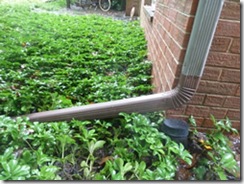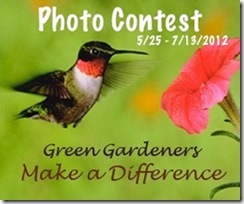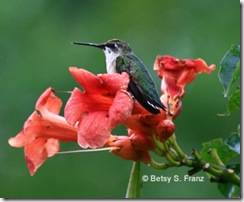 This weekend is, of course, Mother’s Day, and I hope that everyone will spend some time in a garden with their mother.
This weekend is, of course, Mother’s Day, and I hope that everyone will spend some time in a garden with their mother.
Garden with your mother: If your mother lives close enough, plan on spending some time working in a garden with her. I’ve often mentioned what a therapeutic place a garden can be. Working side by side in a garden with your mother gives you some nice, quiet time together to dig deep into personal, bonding conversations and help your relationship grow.
Teach your mother about green gardening: Like many people of their generation, my parent’s idea of gardening was all about creating colorful, flower-filled beds, neatly trimmed shrubs and lush green lawns, using whatever chemicals and techniques were necessary to produce the best and quickest results. Take the time to teach your mother some of the things you have learned about being a little gentler to the earth, such as using native plants, beneficial insects and creating compost.
Visit a garden with your mother: There are plenty of great public gardens in the area. If neither you nor your mother have a garden of your own to work in, take your mother to a public garden or park where you can enjoy the same quiet benefits of being together in nature.
Be a gardening mother: If your favorite part of Mother’s Day is spending time with your kids instead of your mother, gardening provides the same opportunities to bond with your kids as it does with your mother.
Take care of your other Mother: If you don’t live close enough to your mom, or if she is no longer in your life, spend some time in Mother Nature, anyway. Taking care of a piece of the planet gives you a great opportunity to do some mothering of your own. You have the perfect opportunity to nurture and grow something that will add beauty to the world for generations to come.
Take photos of your garden experience: No matter how you spend time with your Mother this weekend, I encourage you to take photos. When I was getting ready to write this post, I really wished I had some photos of my mom in her gardens. She always loved to garden and she was still outside putzing around with her plants well into her late ‘70’s.
So if she doesn’t live close by, take some garden photos and send them to mom. If you do get to spend time with her, capture the experience with a few photos.
And if she laughs, hit the record button and record that beautiful sound. For no matter how much beauty you may be able to create in a garden or experience in nature, none of it can really compare to the laughter of your Mother.
"Earth laughs in flowers." ~ Ralph Waldo Emerson












